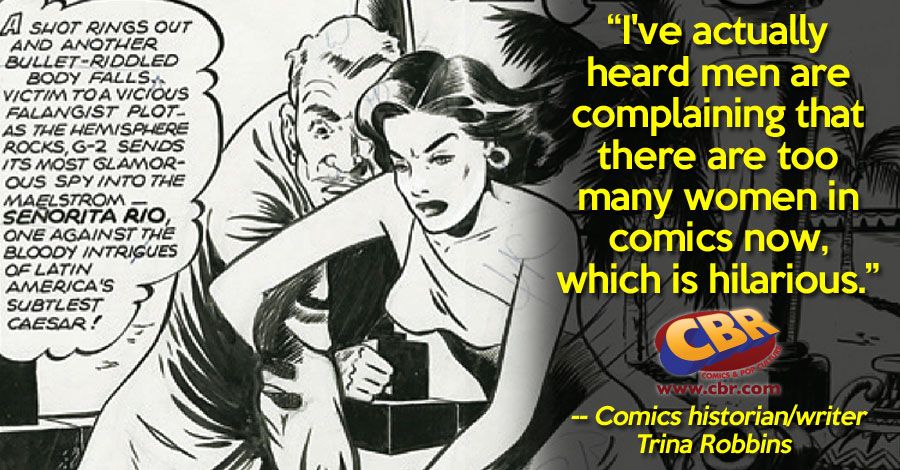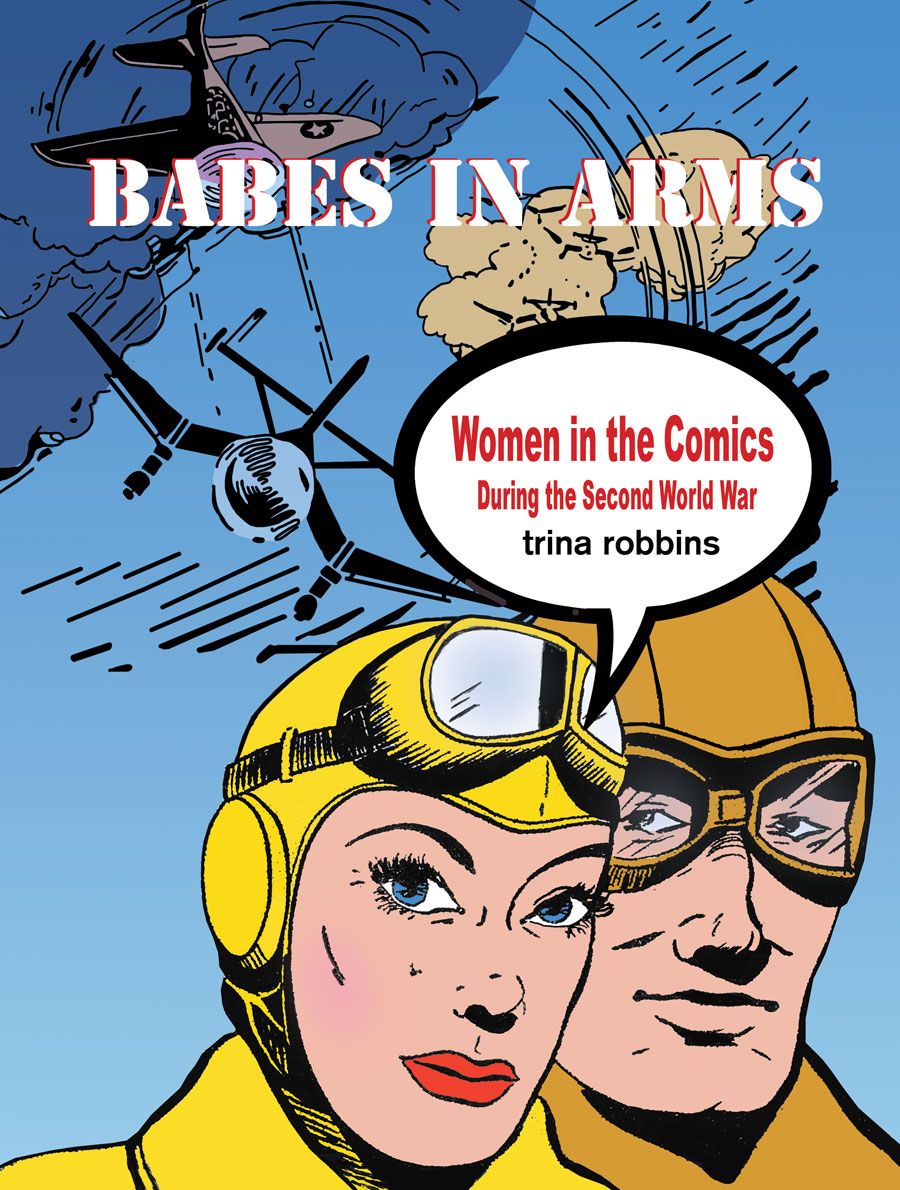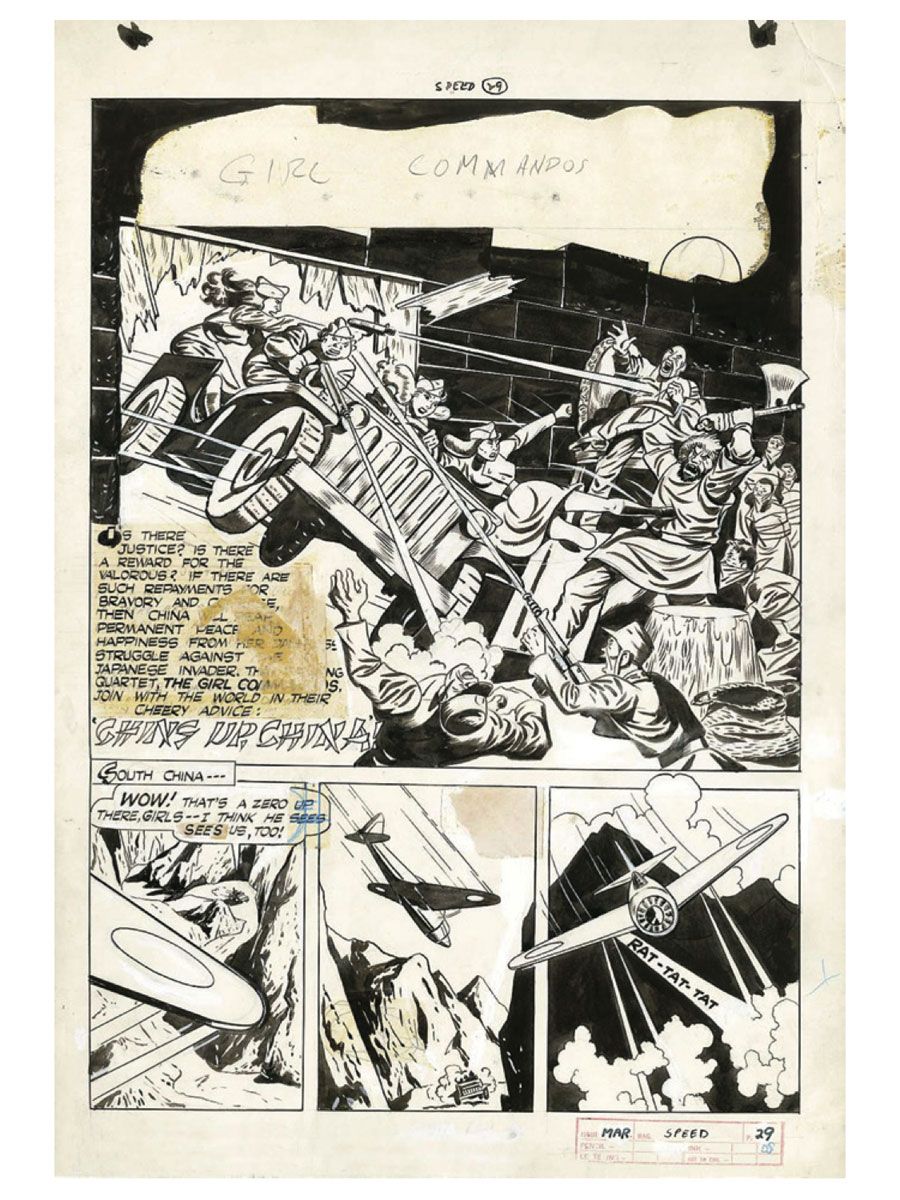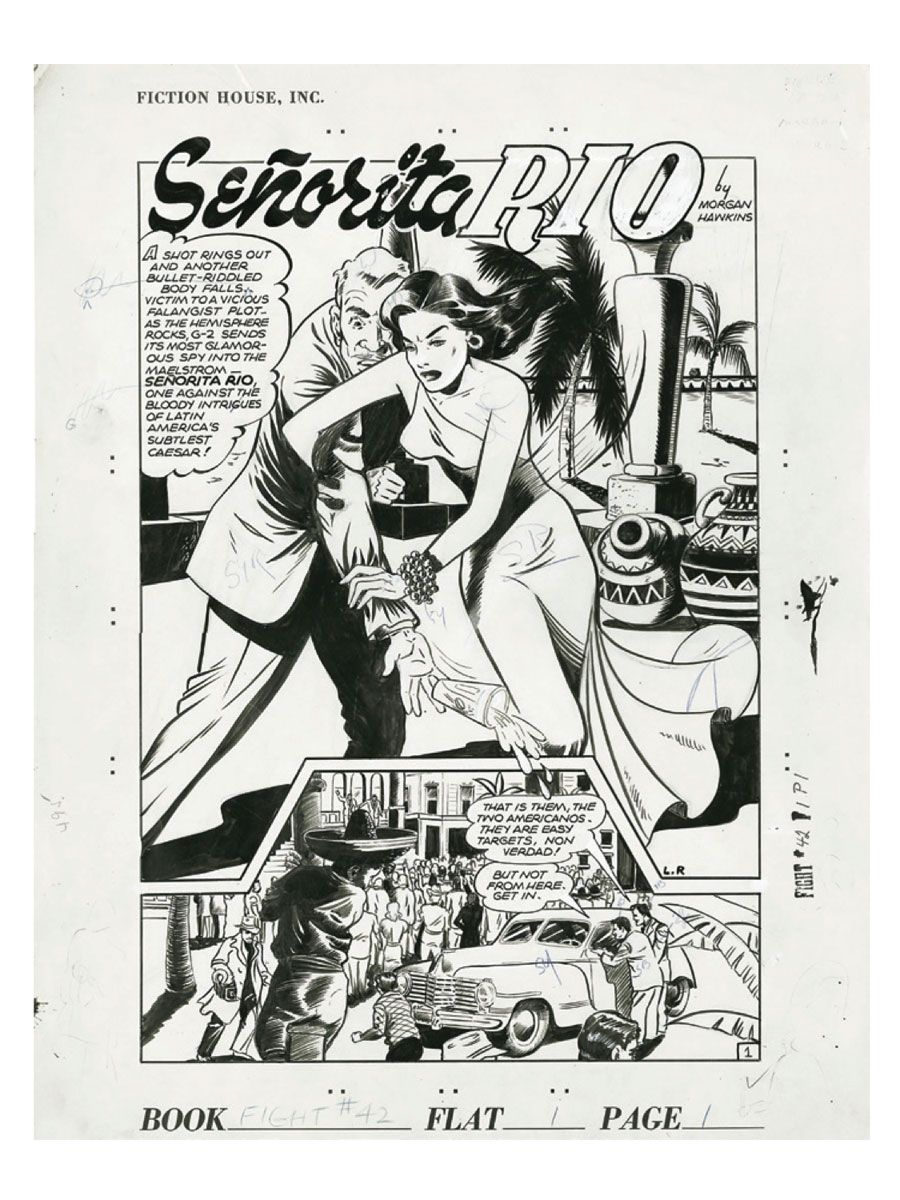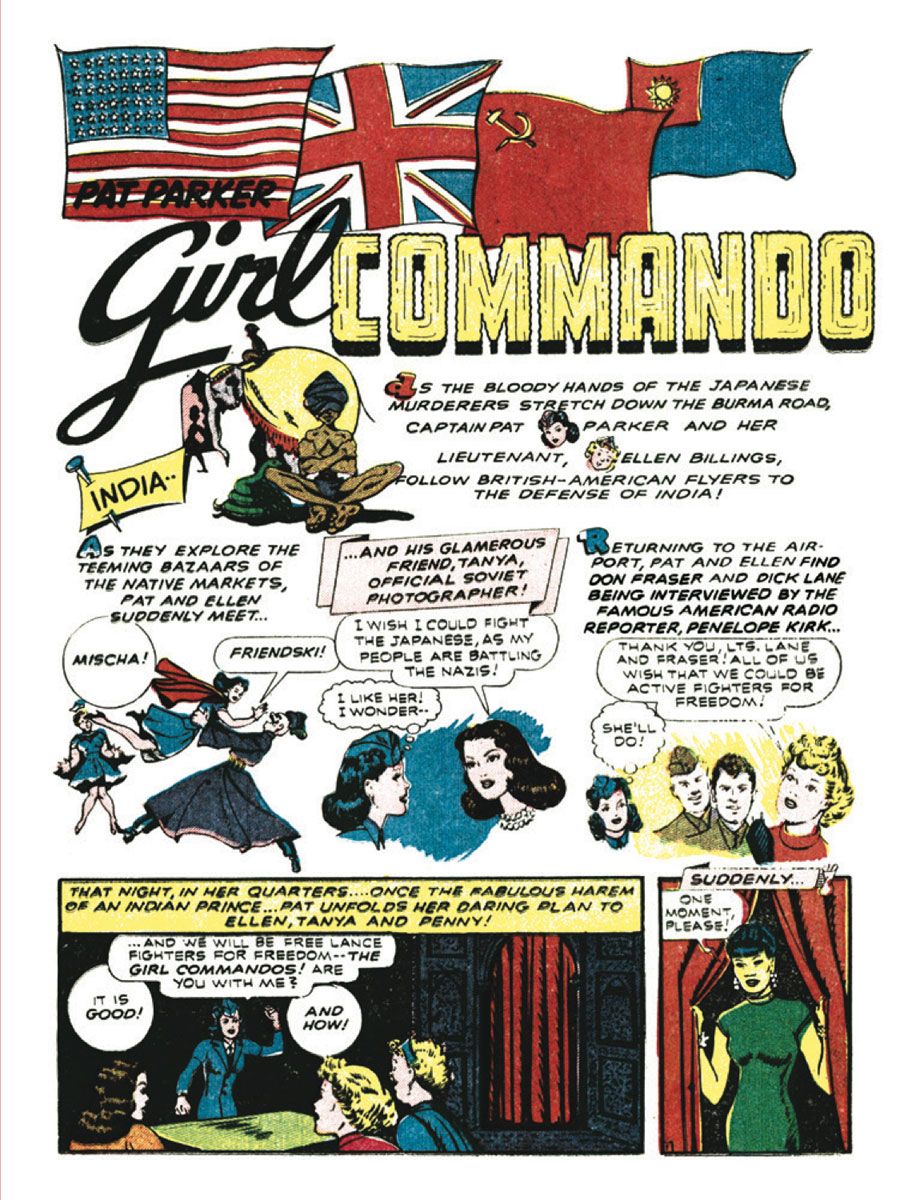Trina Robbins has been writing, writing about and editing comics throughout her lengthy and distinguished career. In particular, she has drawn attention to the work of a range of incredible female cartoonists in books like "Pretty in Ink," "The Brinkley Girls" and "Miss Fury."
SDCC: Robbins, Telgemeier, the Tamakis & More Declare, The Girls Are All Right
Robbins spoke with CBR News about her latest book, the Hermes Press-published "Babes in Arms: Women in Comics During the Second World War." The collection highlights four women in particular -- Lily Renee, Barbara Hall, Jill Elgin and Fran Hopper -- who were crafting complex, interesting work during the war for publishers Fiction House and Harvey, creating comics that depicted beautiful women battling the Axis powers in a variety of ways.
CBR News: Trina, your new book is about four women who drew comics during WWII -- though these are not the only four women, by any stretch.
Trina Robbins: As you may know -- or maybe you don't know -- as in every other industry the guys who were working in comics who were draft age either enlisted or were drafted. And as in every other industry, women filled their positions. There were more women during World War II working in comic books than there had ever been before. I think possibly because the editors were just smart enough to give them the right work, what they drew and tended to draw were strong, beautiful women who fought the Axis. These are four specific women who definitely, during the war, drew strong beautiful women fighting the Axis. That's "Babes in Arms."
Why did you pick these four artists to highlight?
They were kind of natural. Barbara Hall and Jill Elgin worked for Harvey and they drew "Girl Commandos." Everybody knows "Blackhawks," but the "Girl Commandos" are like a female Blackhawks. They're a team made up of women, all of whom come from countries being attacked by the Axis. There's even a Chinese member of the group. There's a plump woman, who might be considered the equivalent of Etta Candy, and they're all strong and nobody's comedy relief. There's definitely racism in the portrayal of the Japanese. I talk about that in my introduction. You can't not talk about it. But every single wartime comic was doing that, so it's not like these people should be singled out for their racism. It was an unfortunate tradition, and also interesting because the Chinese are not drawn in that same way. The Chinese, because they're the good guys, are drawn just fine. The Chinese women are beautiful -- although I must say there are some Japanese women spies who are also drawn as beautiful.
On the Fiction House side, there's Lily Renee and Fran Hopper, both of whom, God bless them, are still with us in their nineties. There's Jane Martin, who's a flying nurse. She starts out as a nurse who can fly planes, and the nurse part is discarded by the wayside at a certain point and she's this heroine aviatrix who fights the Axis. Gorgeously drawn.
Hall drew "Black Cat" and "Girl Commandos," and then Jill Elgin took over "Girl Commandos," is that right?
Yes. Unfortunately, Barbara Hall's fiancee Irving Fiske, whom she later married, managed to convince her that comics were too lowly for her and she should be a fine artist -- which is the comics world's loss.
I have to tell you that she had told me that she drew the first "Black Cat," which it turns out she did not draw. Al Gabrielle drew it. So neither her daughter nor I know if she ever did draw "Black Cat." She was getting on when I interviewed her. She had always told her daughter that had drawn "Black Cat," but at this point, it remains a mystery.
What can you tell us about Fran Hopper, who you've written about in "Pretty in Ink" and your other history books.
It was wonderful to finally meet her. She's living in a retirement home in New Jersey. About two summers ago, I finally met her. Of course it was exciting, but I brought some photocopies with me. I had long suspected, because she has a very distinctive style, that she drew "Patsy Walker" in 1945, which was then one of Timely's top teen titles along with "Millie the Model." I brought photocopies, and she looked at them very carefully with a magnifying glass and she said, "Yes, I drew this." That was very exciting.
Robbins Explores A Century of Female Creators With "Pretty In Ink"
Fiction House is a publisher that comics readers who aren't Golden Age fans may not know about.
I am such a Fiction House fan. They're one of my two favorite Golden Age comics publishers, along with Timely.
First of all, during the War, when the comic companies were hiring women, Fiction House had more women working for them than any of the other companies. They always had a theme, which was beautiful, active women. You'll see covers where the women are in peril and being rescued by men, but you will also see covers where the women are doing the rescuing, where women are in action. Senorita Rio sword fighting with this guy while the man she's trying rescue is sliding off the roof, hanging by his fingernails. And not just in covers drawn by women. All those "Sheena" comics where she's rescuing her dopey boyfriend Bob on the cover, or rescuing some child who's being attacked by a lion -- all of these beautiful women on the covers being active and in control. Fiction House was really great about it.
They really stand out compared to other companies?
Oh, yeah. If you look at most of the other covers, they're definitely the kind where the girl is tied up and about to be threatened by the bad guy and rescued by the good guy. Over and over, that was the theme of covers in the '40s. Fiction House was different.
What about "Girl Commandos," or were they in an anthology?
Unfortunately, they were part of an anthology -- "Speed Comics" -- so usually it was Green Hornet or some other guy on the cover. Except for "Black Cat Comics" -- she had her own book -- these books have guys on the covers. It's the interiors that were strong.
In my favorite all-time Fiction House cover during the War, there's a German platoon in a trench, but above them this woman, beautiful, in a torn white dress with a French flag tied around her waist. She is in the foreground, leading a group of Americans against the German soldiers. It's like a World War II version of the Delacroix painting "Liberty leading the People." It's just beautiful.
Are these the four best artists of this period?
I wouldn't be reprinting them if they didn't think they were some of the best. Also, because they're lost. I mean, nobody knows about these [artists]. People seem to have a very weird memory of Fiction House. They tend to think of it as pinups and sexy babes in torn dresses -- and it isn't. Not that their dresses don't get ripped, but most of what they show is leg. If you compare these beautifully drawn women with bad girl comics of the '90s, they're so clean and pure. If you think about the hypersexual exaggeration in comics that happened, these women are not like that at all.
For years, you've been overseeing reprints and reintroducing a lot of classic work to a new audience. Hermes Press, which is publishing "Babes in Arms," also reprints "Brenda Starr" and other projects. What else do you think really needs to be reprinted?
There are some early women cartoonists who worked for newspapers and comic books who I love and have not received a much attention as they should. One of my favorites is Gladys Parker. If anyone knows Gladys Parker at all, it's because she did strip called "Mopsy." She had a very clean, clear line. For me, as someone who really loves clothes, the most interesting thing about her is that she had a whole other career at the same time she was drawing comics. She was a well known dress designer with her own line of clothes. She was featured in newspapers and magazines as a cartoonist and clothing designer.
There have been a lot of books about Wonder Women in recent years, and in Jill Lepore's book, she really spends a lot of time pointing to Dorothy Woolfolk and Joye Hummel and their work. You've spent years writing about comics history and trying to get us to pay attention to female creators of the past. Do you feel a little vindicated by all this?
Yes! It's amazing how little people know about comics history. Like all the Kirby fans who don't know anything beyond Jack Kirby. I appreciate Jack Kirby. I knew Jack Kirby. He and Roz were the nicest people. But some people think Jack Kirby created comics. They seem to think that it all started with him and really don't know their history.
You're always working on many different projects. What are you working on now?
I'm actually writing my memoirs that's for Kitchen Sink at Dark Horse. That will hopefully be out in 2016. It's almost done.
Are you enjoying it?
I don't know if "enjoying" is the right word, but it has been fun. There's a lot of funny stuff I'm writing about, but I'm still bitter about a lot. I'm an elephant. You should know that I never forget when people are really good to me. I always remember, and when they've been horrible to me, I remember that, too.
I may be writing a book for young readers. I submitted it to one editor, who no longer works there, as a graphic novel. The new editors have said that they'd like to see it as a novel, which for me is something new. Writing comics is much easier than writing a real novel. I have sent them the first twenty pages. I know it's going to take forever to hear back and there's this lengthy editorial process. I hope to do it because I really am enjoying it, and it's a story that I really want to tell, but it's much to early to even think about it.
Coming out at the end of the year is another project which you're editing and overseeing, "The Complete Wimmen's Comix."
It's not just "The Complete Wimmen's Comix" -- it starts with "It Ain't Me, Babe," the very first all-women comic book ever.
And it's coming out at a time when there are more women in comics than ever.
I've actually heard men are complaining that there are too many women in comics now, which is hilarious. It really is an exciting time.

